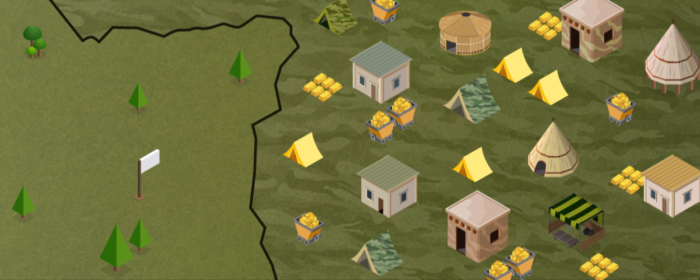
Former combatants of what was the largest guerrilla in Latin America - who separated from the peace agreement signed in 2016 - are in a process of transition and rearrangement of criminal structures, where illicit drug trafficking and illegal mining continue to be the main focal points, now in Venezuelan territory. They have met with indigenous peoples and communities in Amazonas to formalize their presence in the territory, affirming that they have the support of the Venezuelan Government. But they also move to lands of the Orinoco Mining Arc, where they even control coltan mines.
|
Getting your Trinity Audio player ready...
|
His real name is Miguel Díaz Sanmartin, but everyone knows him as "Julián Chollo", his alias from when he joined the ranks of the Revolutionary Armed Forces of Colombia (FARC) in 1996, when he was just 20 years old. If it were not for his strong accent and the olive uniform without insignia that he wears even after having separated from the peace agreement signed by the guerrilla group in November 2016 with the Government of Juan Manuel Santos, he would seem one of the natives of the Venezuelan Amazon, a state bordering with Colombia, where Julian controls everything that goes in, is produced and comes out of the illegal gold mines devouring the heart of Yapacana National Park.
Despite of the security force that follows him everywhere, Julian is perceived as a "lone wolf", which, in addition to his career as a former guerrilla, helped him generate fear and respect among those who know him or have just heard about him.
Short, of mixed race and slanted eyes, characteristic of the indigenous descendants of the scroungers who inhabited El Dovio, a municipality at the south-west of Colombia, Julian began his guerrilla career in Front 40 Jacobo Arenas and then in Acacio Medina, where he hardly appeared in 2012 in the charts as a fourth "replacement", without changing position again. Despite having had a medium command in the guerrillas, his name resonated when the Central Chief of Staff of FARC expelled him from the organization along with four commanders who led the dissidents "for contradicting the political line" of what was now a party.
Géner García Molina, alias "John 40", the highest commander of Acacio Medina Front; Miguel Santanilla Botache, alias "Gentil Duarte"; Ernesto Orjuela Tovar, alias "Giovanni Chuspas", head of Front 16; and Néstor Gregorio Vera Fernández, alias "Iván Mordisco", commander of the First Front, are the four renegades who, together with Julián Chollo, turned their backs on the peace process in Colombia and lead the criminal reorganization of the guerrilla dissidence. These five men, with over 20 years of career and extensive military knowledge, have something in common, all led fronts of the Eastern Bloc, the financial structure of FARC linked to coca production, the axis of this guerrilla movement from 1993 to 2002, when it was at its best.
"At first, they entered Venezuelan territory looking for refuge (...) The guerrillas was present, especially of FARC, from the mouth of the Meta river to Cerro el Cocuy on the border with Brazil," says indigenous Baniva Liborio Guarulla Garrido, Governor for 17 years - until October 2017 - of the Amazonas State. "It was so evident that one had to attend indigenous communities on both sides. Sometimes we had to see their flags, their troops and there was no problem, until Uribe arrived."
Álvaro Uribe Vélez won the presidency of Colombia thanks to his promise to "restore peace in Colombia" with a government program called "democratic security" policy, focused on regaining control of the territory and attacking the guerrillas’ rearguard. It was 2002 when the new security policy—financially supported by the United States of America through "Plan Colombia"— guaranteed the deployment of a military offensive that intensified the attacks on the insurgent positions and provided the Colombian Government a tactical victory on the main guerrilla hotspots, until their withdrawal.

This forced insurgents to diversify their portfolio of criminal economies which, fortunately for them, coincided with the increase in international prices for gold and raw materials, thus making illegal mining an important source of financing. From 2007 to 2012 only, illegal gold mining had grown in Colombia inversely to the cultivated hectares of coca leaf, which, according to the United Nations, had dropped from almost 99,000 in 2007 to around 47,000 in 2012. Gold displaced drug trafficking as the most profitable business for guerrillas and organized crime.
It was then, between 2011 and 2012, when a large FARC camp was seen on the banks of the San Miguel river in Maroa municipality, which according to Guarulla, moved to the Javita Maroa highway, where they established an airport larger than the village airport, "It even had lighting for the night", he recalls.

Intelligence records in Colombia agree with Guarulla's version. On June 10, 2011, in the village of Danubio, municipality of Puerto Rico, department of Caquetá, a meeting was held with the participation of commanders Mauricio Jaramillo "El Médico" —member of FARC secretariat, who assumed the leadership of the Eastern Bloc after the death of "Mono Jojoy"— and the now dissident Gentil Duarte and Jhon 40. In the meeting, the creation of the Acacio Medina Front was agreed with the aim to oxygenate the weakened Front 16 that had 360 combatants in 2002 and just 76 in 2011. The creation of the Acacio Medina Front was made official in 2012 on the banks of San Miguel River in the municipality of Maroa, Venezuelan territory, with Jhon 40 as ringleader.
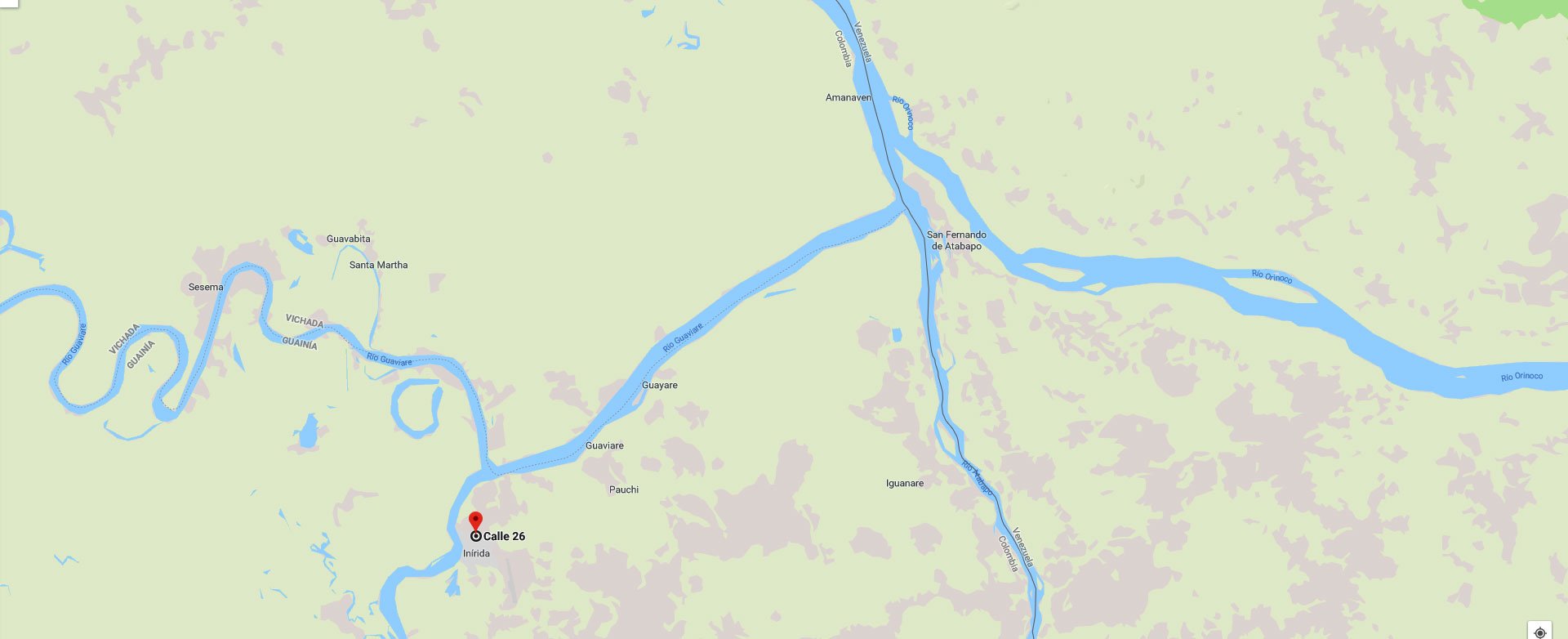
The exploration of the Acacio Medina in Venezuela then connected with the Casiquiare River, a body of water of 326 kilometers (202.56 miles) that is a tributary of the Orinoco River. In its advance, the Acacio Medina penetrated the Atabapo River and took control of the gold deposits on the grounds of Yapacana National Park.
The objectives of the Acacio Medina Front were financial and by then, it had already ventured into gold and coltan mines in the neighboring municipality of Guainía of Colombia, where mining activity dates back to half a decade. In mid-2015 and according to a Colombian police report prepared after executing "Operación Arpón," the front had about 150 troops, fifty in Colombia and the rest in Venezuela.
"FARC said to itself, 'we may be able to exploit new criminal economies, we have a government that gives us shelter and refuge'”
Eduardo Álvarez Venegas —Director of the Armed Conflict Dynamics and Peace Negotiations Ideas for Peace Foundation (FIP), a Colombian NGO that studies the path of dissidence since the signing of the peace agreement— explains that the creation of the Acacio Medina Front was part of a finance and border policy strategy that was born at the eighth meeting held in April 1993 in Guaviare, where FARC designed a FARC war economy plan to diversify its finances and a possible strategic retreat to other countries.
Although it was implemented much later, the investigator indicates that FARC found in Venezuela a favorable government for that retreat. "FARC said to itself, 'we may be able to exploit new criminal economies, we have a government that gives us shelter and refuge'. As a result, there began to be some sort of adaptation to the military strategy of the Colombian Government, which clearly managed to strategically defeat FARC guerrillas, though not tactically. That was part of the acceptance that allowed them to sit down to talk in Havana, but part of being tactically afloat was to create structures such as the Acacio Medina Front to ensure other spaces still far from any type of state and military intervention in terms of territorial control," he says.
Relevant information about Julián Chollo, the boss at the Yapacana mines - within the distributions of duties of the year when Acacio Medina was created -, is the control he had over a tungsten mine in Guainía, a potential material to manufacture machines and power devices.
Cerro Yapacana National Park is located in the southwestern sector of the Guiana Shield, in the central-western region of the Amazonas state. In the 230-thousand hectare natural reserve - established as a protected area since 1978 for its great scenic and scientific value -, live more than 8 thousand Venezuelans, Colombians, Brazilians and Ecuadorians, who exploit day and night seven gold deposits named Cacique, La 40, La 44, La 50, Fibral, Jerusalem and Moyo (the oldest and largest).
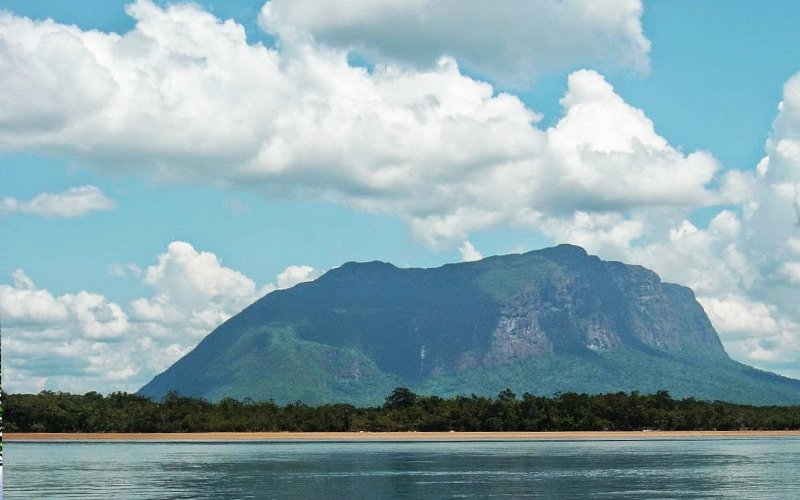
As revealed by an action taken in 2017 by the Ombudsman's Office of Inírida in Colombia, following a miner displacement that resulted in the activation of an orange alert in that municipality, at just 40 minutes from San Fernando de Atabapo. At least 600 people walked through the jungle to be safe in Inírida. Some papers threw from a military plane that urged them to take action ended up being interpreted as a future bombing of the mines, which prompted thousands of people to walk for days and nights on improvised trails to avoid the requisitions and extortion in Venezuelan military checkpoints set out in the waterways.
The mines are a sort of livelihood for families. There are no opportunities here other than working for the Government.
Different versions emerged as reasons for the eviction of the mine, but two previous events registered in the state yielded to the idea about the strong pressure put by the Venezuelan central government inside the security forces: the disappearance for over four months of an MI17V5 helicopter with 13 people on board, including five civilians and a 4-year-old boy, and the assault on a military checkpoint in "El Suspiro" area of the Orinoco River, by men identified as members of FARC, who took arms and cell phones presumably as a revenge for a seizure made by troops of the Bolivarian National Guard.
The exploitation of Venezuelan gold has employed thousands of Colombians for several decades. Julián Mancera, head of the Colombia Migration office in Puerto Inírida, explains it. "The mines are a sort of livelihood for families. There are no opportunities here other than working for the Government. Those who have money suddenly start a business or something like that, but there is no employment generation. Hence, the mine becomes the only livelihood."
Sitting at his dark mahogany desk, with the logo of the Mayor’s Office of Inírida, accompanied by the phrase “starting to believe,” behind him, Camilo Andrés Puentes Garzón, the youngest mayor in the history of that Colombian municipality, smiles and says bluntly, "The truth is that Colombian people live, work and exploit a mine in Venezuela. We know, and they tell us, that they make payment agreements or better known here as payment of “vacunas” (vaccines) to be able to work, pass elements and extract gold from there."
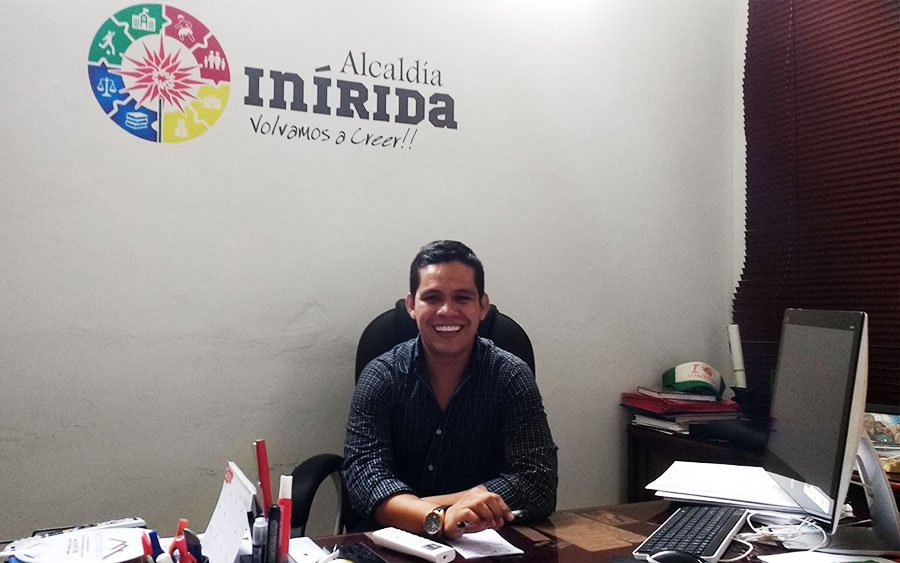
But he does not miss the opportunity to make a unanimous complaint that constantly and silently resonates as the murmur of the wind in the Amazon jungle, among all the inhabitants of both sides of the border — the evident marriage between the irregular groups and the Venezuelan authorities.
- Who mediates between the Venezuelan authorities and the miners?
- They tell us that the guerrillas supposedly protect them from the guard, that they are the ones who directly negotiate. "
- The guerrillas have control of the mines?
- They have control of the mines.
- Which guerrilla group?
- FARC.
- Dissidents?
- Yes, dissidents, because FARC is over. Although that is very simple; they changed the bracelet and now they can be called ELN - he pauses before finishing and adds – I will tell you something. The army here will end the dissidence, but if they are in Venezuela, it is impossible.
In Atabapo, 90% of the population is indigenous and lives in poverty, a vulnerability that has been integrated into the economy around the mine, in addition to the burden of the environmental impact and disruption of daily activities.
Camilo Silva, a retired educator and captain of the San Juan de Puruname community in Piauá, is 61 years old and faces the situation by trying to convince young people not to abandon their economic practices, like small farms and fishing, urging them to participate in the economy of the mine with the sale of its products. Together with one of his sons, he created a tourist cooperative that promotes sport fishing in the Atabapo River, but in 2017, the camp received just two groups of national tourists. "Foreign tourists stopped visiting the state due to insecurity."
This insecurity is generated by the certainty that the territory is taken by former Colombian guerrillas with extensive experience in kidnapping and crimes against civilians. But inside the mine, the guerrilla is a source of fear because it represents order and law. "They are FARC guerrillas who have control over the mine, but not even a needle gets lost in there," says Junior, a 19-year-old Colombian who worked in the mine attending a food stall.
An activity associated with the development of illegal mining by criminal groups, which is of particular concern to the Warelelu indigenous women's organization, is the establishment of alliances with other criminal activities, like sexual exploitation and the recruitment and use of children in improvised structures called "currutelas" where little girls are offered for sexual entertainment.
While Warelelu denounces the possible existence of trafficking networks, for the Indigenous Organization Piaroa Huottuja del Sipapo (OIPUS), of Autana municipality, the main concern is the recruitment of young indigenous. Carlos Morales Peña, assistant coordinator of OIPUS and resident of the Caño Uña community, affirms that the indigenous youth leave to work with the guerrillas, attracted by money. "The other day, they offered soccer balls, volleyball nets and also diesel fuel for the power plant in my community. They offered them things they need and the boys received them. That is how they recruit young people."
"They arrived saying, ‘We did not come to invade. We did not come to harm. We did not come to recruit children. We came to protect them’.
It was through an indigenous man recruited by the guerrillas that OIPUS received the first official FARC communication inviting him to discuss his presence in Piaroa territory. The letter confirmed the rumors of that guerrilla penetration when they began to notice an unusual fluvial traffic in the dawn, footprints of boots and dismantling of spaces that looked like itinerant camps, by the roads and rivers where they settle. The communication received by Otilio Santos, general coordinator of OIPUS, dated May 14, 2013, did not leave room for assumptions. FARC was inviting the communities of the Sipapo River tributaries to a meeting with their presence in Autana as the first item on the agenda.
That was the first of three meetings, which the towns and indigenous communities of the municipality were called to, with uniformed men and women with Colombian accent, who identified themselves as members of FARC and then of ELN. The indigenous people of Autana opposed through their organizations to the presence of these invaders in their territories. The assistant coordinator of OIPUS said that in one of the meetings "they arrived and said, ‘We did not come to invade. We did not come to harm. We did not come to recruit children. We came to protect them’. And we told them, ‘you arrived without prior consultation. That is already a violation of our human and customary rights. You have already committed a crime’."
But it was no use, and today the irregulars show themselves publicly in Autana. The communities see them going by their boats and showing off their weapons. "Before, they were not seen, they moved at night (...) but after they were discovered, they do not care. You see them at any time in the ports, armed, moving merchandise, visiting communities to buy food."
What the OIPUS coordinator denounces also occurs in Atabapo and Manapiare municipalities, where indigenous leaders and authorities say that nearly in all the waterways, men and women dressed in military uniforms, patrol on the banks of the river with rifles at their backs. The villagers identify them as members of FARC guerrillas, and despite the peace process, for them, they are still FARC, and the dissidents who penetrated the state of Amazonas continue holding the mark of the armed group.
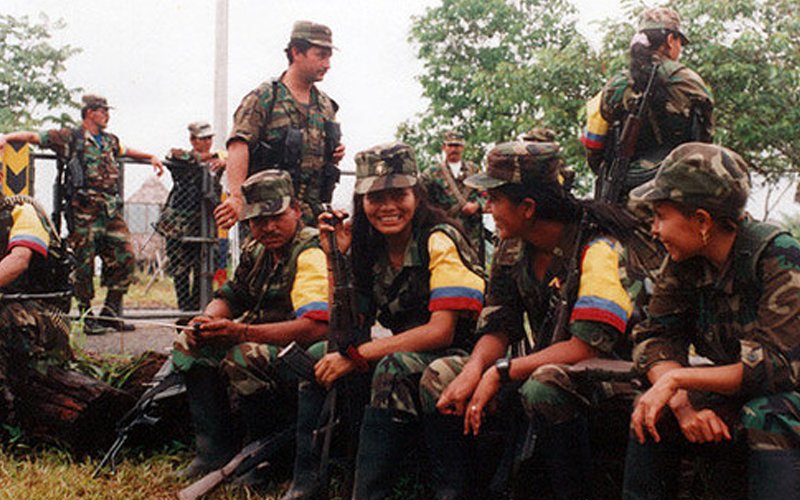
Lissa Pérez, president of the Cherejume indigenous women's organization of the municipality of Manapiare, came face to face with a commando group that surrounded her bongo, when she was sailing the waters of the Ventuari River towards Guanay Valley. After a brief confrontation, Lissa reignite the engines of her bongo and continued on her way, but what was never expected was to find them again at the National Guard military checkpoint on the San Juan de Manapiare dock, where they stopped her again to check her boat. "They arrived greeting the military men very calmly. They even shook hands."
The guerrillas also move to the Orinoco Mining Arc (AMO) - a mega project promoted by the Venezuelan government in an attempt to increase the nation’s foreign currency income in the midst of falling oil prices -, which covers an area of 111,843 square kilometers (43,182.82 sq mi) and has 7,000 tons of reserves of gold, copper, coltan diamond, iron, bauxite, and other minerals. The aim is to boost criminal economies to assure their continuity or establish new alliances that keep them float.
Camouflaged in the jungle, they arrived by a trail that connects the municipality of Manapiare, state of Amazonas, with the state of Bolívar, passing through Los Pijiguaos, Alto Parguaza, and finally, to the "Y", an intersection between Puerto Nuevo and the Caicara highway, where there is an illegal open-air coltan deposit controlled by the National Liberation Army (ELN). There, they occupy the land of Area 1 of the Orinoco Mining Arc, a block of 24,717 square kilometers (9543.28 sq mi) where the first two joint ventures - identified as Oro Azul and Parguaza, incorporated between the Venezuelan state and companies Faoz and Supraca - operate to exploit coltan.

The president of Cherejume indigenous women's organization saw the guerrilla camps in Cedeño municipality when she traveled to Sabana Cardoza, an indigenous village at the border of the mining arch in Bolívar state. Together with her family, she walked for a week on the same trail used by the irregulars. "The walking route was opened and adapted for four-wheel transmission cars," she says. It took a week to reach the village where a relative was waiting for them and saw them for the first time on the other side of the river.
"I saw their camps, their cars, their bikes. There were a lot of gas drums. Around six o'clock in the afternoon, the people arrived, they looked like soldiers. All my relatives said that it was the guerrilla. Everyone said that these people bring medicine, food, everything. We do not need gas or diesel." He pauses to add, "Everyone there is working with these people".
What is still to be known is the relationship between "farianos" (FARC members) and their "eleno" (ELN members) cousins, who dominate the coltan-full deposits.
Puerto Ayacucho is the capital of the state of Amazonas and home to the state's public authorities. Businesses close from 12 to 3 in the afternoon, and during that time, the bustle of the market is turned off and the city is deserted and submerged in a wave of slow and dusty heat that contravenes with the image of a place with a rate of 214 violent deaths per every 100 thousand inhabitants.
So much violence together in a peaceful village on the banks of the Orinoco River, barely founded in 1924, has caused panic among its inhabitants, who still have not lost their capacity to be amazed when they learned that each weekend was worse than the previous one. On one occasion, the bodies of six people were found in one place in Los Caobos area, then a group of seven in the countryside area of San José in Cataniapo, and another two with signs of torture in the Payaraima area.
The deaths that turned this peaceful town into the third most violent city in the country are associated with the presence of guerrillas in the area.
Given the silence of police authorities, Rowinson León, who held the position of Secretary of Policy and Border Affairs in the State Government of Amazonas for three years, kept a record of violent deaths. The work reflected that throughout three years, the number of murders was always on the rise —from 38 violent deaths in 2014 to 214 in just two years in the municipality of Atures alone.
The Church, local authorities, the human rights office, the workers of Raudal Estéreo community radio, the taxi driver and even the candy vendor in Plaza Bolívar, agree that the deaths that turned that peaceful town of 100 thousand inhabitants in the third most violent city in the country - according to the Venezuelan Observatory of Violence - are associated with the presence of the guerrillas in the area.
They identify them as "los pata e'goma" (rubber leg), a pseudonym coined by the use of rubber boots with military clothing. The pata e’goma are members of the National Liberation Army (ELN), the last active guerrilla in Colombia, and the government of Juan Manuel Santos recently cancelled a peace dialogue with them.
The former governor of Amazonas, witness for 17 years of the arrival and settlement of Colombian guerrillas in that part of the country, assures that the presence of ELN was evident when the Venezuelan government decreed in May 2016 a state of emergency that remains in force. This concept allowed replacing the civil authority by the military, "it is at that time that they took over all the ports of the municipality, controlling the business of smuggling drugs, gas, but also the security aspect".
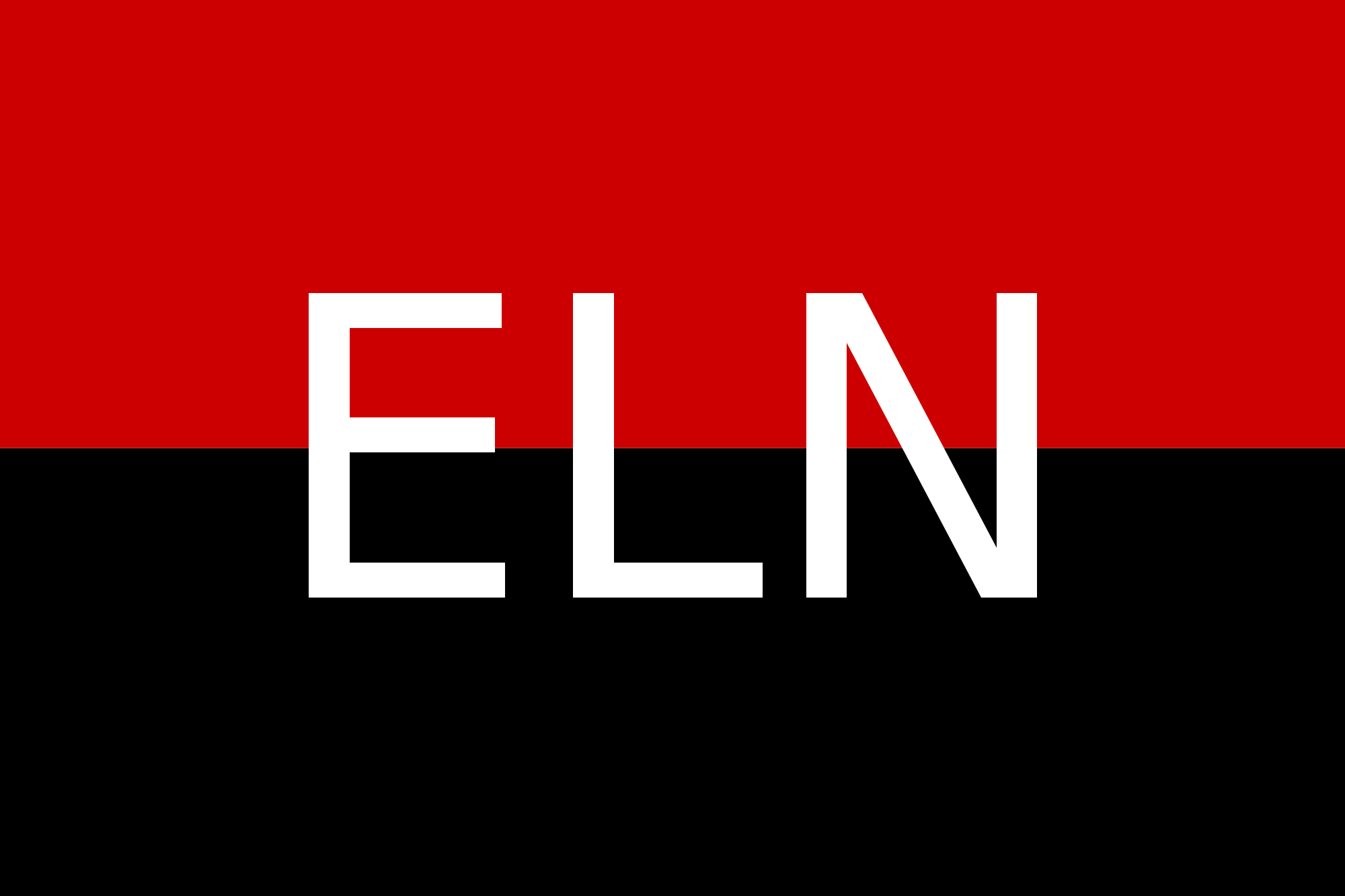
ELN could consolidate in Puerto Ayacucho what they call "criminal power", an action that is not limited to the economic sphere, but also covers the social and political spheres, by exercising duties similar and parallel to those of the State but under their own rules of game.
All the complaints indicate that the "elenos" are the ones responsible for the multiple murders in the city. Jhonny Eduardo Reyes Sequera, titular Bishop of the Apostolic Vicar of Puerto Ayacucho, assures that these groups play a criminal cleaning role. "Based on testimonies in the neighborhoods, it is known that it was the guerrilla, but the most striking thing is that everyone says that the boys were considered neighborhood scourges to those who had already been warned once and twice and that they knew that the third call meant they were going to be eliminated."
Noraima Ángel, general coordinator of the Human Rights Office of Puerto Ayacucho, an NGO that works in the field with the indigenous communities located north of the municipality of Atures, reveals that the guerrillas have also reached the indigenous communities offering help in the community organization, "trying to straightening out the boys with bad conduct, behavioral problems, consuming some type of drug or stealing within the community," he says.
Betania Topocho is a Piaroa community located 44 km (27.34 mi) by land from Puerto Ayacucho and is politically emblematic for acting as a pilot in the implementation of social programs promoted by the national government. The inhabitants of that community have been benefited with a fruit processing plant, a community radio, an ambulatory care clinic, a school, a Communal Gas establishment, and credits for economic and social undertakings. Ironically, it is also a metaphor for the penetration of guerrilla groups into the social and political organization of the indigenous peoples and communities of Amazonas.
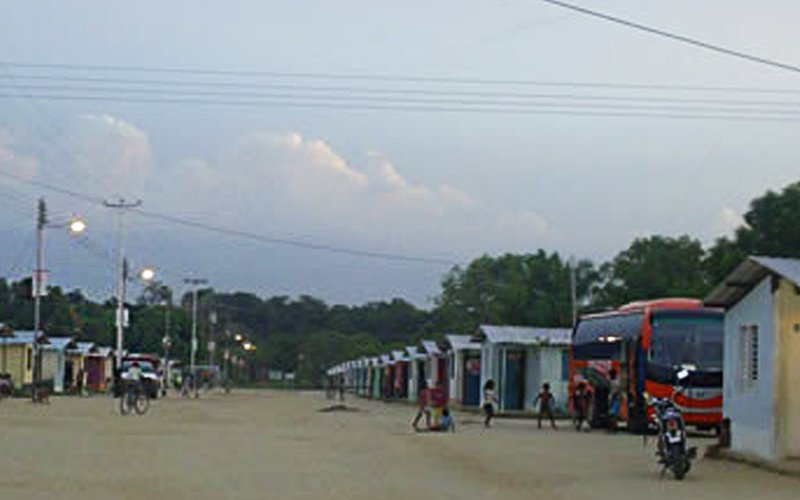
There have been disagreements among school principals who condemn community leaders for unloading aspects of the communal order onto armed groups. "A teacher told us that one day the 'pata e'goma' entered a classroom saying 'let’s see who the ones who misbehave are'. This occurred in front of some 16 to 17-year-old kids. Then they called a small group of three by their names, took out the gun and said 'we are going to kill him right here in front of everybody so he can learn'. All were petrified, but what was most alarming is that the people in the community said 'yes, that way they will learn'" says Noraima Ángel.
That atmosphere extends to all Puerto Ayacucho. Although the population in general states that they live in fear of the power that the illegal people hold, they also justify that they carry out a "social cleaning" work.
The "elenos" have become a "parallel Government" in Puerto Ayacucho.
Rowinson León says that only 10 out of the 214 murders that occurred in 2016 were labeled as theft to victims identified as workers. As to the rest, the only thing that could be identified was an age group of victims under 30 years old, mostly with a criminal record, found with bullet wounds in the head, and the absence of relatives willing to report.
The former director of policy and border affairs of the State Government thinks that it was the population itself that resorted to these groups in search of help. "People who are tired of being the victims of theft, robbery, who find themselves with a totally corrupt security organization, who see no progress in reporting neither respect for their problem, were fed up. I do not justify it, but if the laws work here none of this would happen."
The "elenos" have become a "parallel Government" in Puerto Ayacucho, installing an analogous functionality where the level of connection of the national authorities is not very clear. What strikes the most, as pointed out by the general coordinator of the Human Rights Office, is that the guerrillas who penetrated the communities claim that their role is to protect the border "because if something happens, like a coup against the current government, they will intervene, they will defend. They are there to protect the Bolivarian revolution. That is what they say in the communities."
A group of inhabitants was summoned to a meeting in the Don Ramón Brisa farm, 180 kilometers (111.84 mi) from Puerto Ayacucho, in San Fernando. Two men dressed in civilian clothes took Professor José Lima, an honorary social comptroller, sworn by the municipal chamber, from his house. "They did not identify themselves. They simply said that they had to attend a meeting. They stopped a motorcycle taxi and indicated the driver where should he take me."
"When I arrived at the farm, I saw about 15 motorcycles and the presence of some town councilors. I thought it must be a very important meeting since we were surrounded by guards, but they were actually the guerrillas, with all their clothing, uniformed, with their bracelet and a number on the back of the shirt. Some were in charge of security; others were responsible for distributing soda and bread. At that moment I said 'no, this is not a meeting with a military man from the area.' And when I was about to enter they asked me:
- Sir, where are you from?
- I am the social comptroller.
- Ah yes, you are Mr. Lima. Come in. Do you have a cell phone?
- Yes
- Show it to me.
They took it from me and put it in a bag."
We are revolutionaries. We are with the revolution and we are supported by the Maduro government.
Lima indicates that there were about 80 people, residents and municipal authorities, in the closed room. The most prominent attendees were the president of the Municipal Chamber, José Yavinape; the then candidate for the National Constituent Assembly for the United Socialist Party of Venezuela, Erika Belsbeth Lima; the president of the communes, Rodolfo Mirabal; eight representatives of Communal Councils, and the head of the office of Corporación Venezolana de Guayana (CVG) in Atabapo.
The situation was only to observe after a while a tall, thin man dressed as a soldier who stood in front of everyone and without further protocol said "I am Commander Jimmy of the National Liberation Army, ELN, we are here to establish order. We are revolutionaries. We are with the revolution and we are supported by the Maduro government."
When the floor was opened for discussion, there were people who expressed their support, including the representative of the CVG and Rodolfo Mirabal, president of the communes. "Later, we learned that Mirabal was responsible for organizing everything. At the meeting they talked about comrades. Until a teacher intervened and said that she did not agree, that they had to leave town because we had our authorities," said José Lima.
"I wanted to go and they told me I could not, that I had to listen to the things that were being talked about. Then, they wanted to organize us at discussion tables to discuss the problems of the people. How were we supposed to participate in that madness? They wanted the communal councils to collect signatures, write a document recognizing the presence of these people. They were looking for a refuge here because they cannot go there anymore. The Colombian Armed Forces chases them."
My biggest fear is that our children are going to take over our grandchildren. They also need to strengthen their battalion and there are already several boys recruited.
Two days before the meeting in San Fernando, two boys were found dead in the street. It was the only violent event that recorded in 2017. They were one next to the other with shots in the head and face.
"They distributed a subversive leaflet here that said that they did not want to see criminals, that after nine at night they did not want to see people in the streets. The leaflets were signed by ELN, but they denied their authorship at the meeting."
"My biggest fear is that our children are going to take over our grandchildren. They also need to strengthen their battalion and there are already several boys recruited. They have their big camp on the road in the Cayo Viejita area, via Santa Bárbara del Orinoco, in a jungle. They have a power plant and already order the construction of grills for large pots, because they are quite a few, over 100. They have money for everything."
In San Fernando there are those who have given in to the offer of protection and services offered by the guerrillas, "Now, if you get robbed, people say 'let's inform the pata e'goma'. People resort to them more than to the guards or the police. People already know that they are here since a year and a half ago. They will settle here as the owners and then, we will have to pay taxes to sell cassava flour. They will not leave this place unless there is a change of government, because the same government tolerates them. "
While Colombia celebrates the end of a war that lasted for six decades - with a balance that exceeds eight million victims - and is preparing for an electoral race with Rodrigo Londoño Echeverri - former number 1 of the largest guerrilla in Latin America - as a presidential candidate, Venezuela faces the consequences of an inherited conflict that count on the alliance of local and national authorities, which indicates that peace will not cross the border.
Adrián Perdomo Mata has just entered the list of sanctioned entities of the US Department of the Treasury, as president of Minerven, the state company in charge of exploring, exporting and processing precious metals, particularly gold from the Guayana mines. His arrival in office coincided with the boom in exports of Venezuelan gold to new destinations, like Turkey, to finance food imports. Behind these secretive operations is the shadow of Alex Saab and Álvaro Pulido, the main beneficiaries of the sales of food for the Local Supply and Production Committee (Clap). Perdomo worked with them before Nicolás Maduro placed him in charge of the Venezuelan gold.
Gassan Salama, a Palestinian-cause activist, born in Colombia and naturalized Panamanian, frequently posts messages supporting the Cuban and Bolivarian revolutions on his social media accounts. But that leaning is not the main sign to doubt his impartiality as an observer of the elections in Venezuela, a role he played in the contested elections whereby Nicolás Maduro ratified himself as president. In fact, Salama, an entrepreneur and politician who has carried out controversial searches for submarine wrecks in Caribbean waters, found his true treasure in the main social aid and control program of Chavismo, the Clap, for which he receives millions of euros.
While the key role of Colombian entrepreneurs Alex Saab Morán and Álvaro Pulido Vargas in the import scheme of Nicolás Maduro’s Government program has come to light, almost nothing has been said about the participation of the traders who act as suppliers from Mexico. These are economic groups that, even before doing business with Venezuela, were not alien to public controversy.
Even though there are new brands, a new physical-chemical analysis requested by Armando.Info to UCV researchers shows that the milk powder currently distributed through the Venezuelan Government's food aid program, still has poor nutritional performance that jeopardizes the health of those who consume it. In the meantime, a mysterious supplier manages to monopolize the increasing imports and sales from Mexico to Venezuela.
Turkey and the coastal emirates of the Arabian Peninsula are now the homes of companies that supply the main social -and clientelist- program of the Government of Venezuela. Although the move from Mexico and Hong Kong, seems geographically epic, the companies has not changed hands. They are still owned by Colombian entrepreneurs Alex Nain Saab Morán and Álvaro Pulido Vargas, who control since 2016 a good part of the Import of food financed with public funds. Around the world for a business.
Since the borders to Colombia and Brazil are packed and there is minimal access to foreign currency to reach other desirable destinations, crossing to Trinidad and Tobago is one of the most accessible routes for those in distress seeking to flee Venezuela. Relocating them is the business of the 'coyotes' who are based in the states of Sucre or Delta Amacuro, while cheating them is that of the boatmen, fishermen, smugglers and security forces that haunt them.
When Vice President Delcy Rodríguez turned to a group of Mexican friends and partners to lessen the new electricity emergency in Venezuela, she laid the foundation stone of a shortcut through which Chavismo and its commercial allies have dodged the sanctions imposed by Washington on PDVSA’s exports of crude oil. Since then, with Alex Saab, Joaquín Leal and Alessandro Bazzoni as key figures, the circuit has spread to some thirty countries to trade other Venezuelan commodities. This is part of the revelations of this joint investigative series between the newspaper El País and Armando.info, developed from a leak of thousands of documents.
Leaked documents on Libre Abordo and the rest of the shady network that Joaquín Leal managed from Mexico, with tentacles reaching 30 countries, ―aimed to trade PDVSA crude oil and other raw materials that the Caracas regime needed to place in international markets in spite of the sanctions― show that the businessman claimed to have the approval of the Mexican government and supplies from Segalmex, an official entity. Beyond this smoking gun, there is evidence that Leal had privileged access to the vice foreign minister for Latin America and the Caribbean, Maximiliano Reyes.
The business structure that Alex Saab had registered in Turkey—revealed in 2018 in an article by Armando.info—was merely a false start for his plans to export Venezuelan coal. Almost simultaneously, the Colombian merchant made contact with his Mexican counterpart, Joaquín Leal, to plot a network that would not only market crude oil from Venezuelan state oil company PDVSA, as part of a maneuver to bypass the sanctions imposed by Washington, but would also take charge of a scheme to export coal from the mines of Zulia, in western Venezuela. The dirty play allowed that thousands of tons, valued in millions of dollars, ended up in ports in Mexico and Central America.
As part of their business network based in Mexico, with one foot in Dubai, the two traders devised a way to replace the operation of the large international credit card franchises if they were to abandon the Venezuelan market because of Washington’s sanctions. The developed electronic payment system, “Paquete Alcance,” aimed to get hundreds of millions of dollars in remittances sent by expatriates and use them to finance purchases at CLAP stores.
Scions of different lineages of tycoons in Venezuela, Francisco D’Agostino and Eduardo Cisneros are non-blood relatives. They were also partners for a short time in Elemento Oil & Gas Ltd, a Malta-based company, over which the young Cisneros eventually took full ownership. Elemento was a protagonist in the secret network of Venezuelan crude oil marketing that Joaquín Leal activated from Mexico. However, when it came to imposing sanctions, Washington penalized D’Agostino only… Why?
Through a company registered in Mexico – Consorcio Panamericano de Exportación – with no known trajectory or experience, Joaquín Leal made a daring proposal to the Venezuelan Guyana Corporation to “reactivate” the aluminum industry, paralyzed after March 2019 blackout. The business proposed to pay the power supply of state-owned companies in exchange for payment-in-kind with the metal.